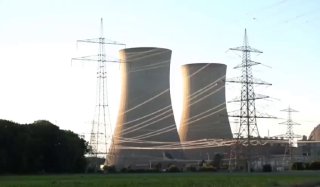Germany blew up the cooling towers of the Grafenrheinfeld nuclear power plant today, marking the end of an era in the country’s energy production. The plant, which was in operation between 1981-2015, had been a source of controversy and debate for many years.
The decision to close down the Grafenrheinfeld plant and all of Germany’s nuclear power plants by 2022 was made in the wake of the Fukushima disaster in Japan. Chancellor Angela Merkel, who had previously supported nuclear power as a source of clean energy, changed course and decided to phase out nuclear power in Germany.
Today, there are no more nuclear power plants left in Germany. The country has shifted its focus to renewable energy sources such as wind and solar power, aiming to reduce its reliance on fossil fuels and decrease its carbon emissions. The closure of the Grafenrheinfeld plant is a significant milestone in Germany’s transition to a more sustainable and environmentally friendly energy system.
The demolition of the cooling towers is both a symbolic and practical step in the decommissioning of the nuclear power plant. It represents the end of an era but also serves as a reminder of the importance of moving towards cleaner and safer energy options.
As Germany continues to lead the way in renewable energy innovation, other countries around the world are watching closely and learning from its experiences. The closure of the Grafenrheinfeld plant is a testament to the country’s commitment to a more sustainable future and a cleaner environment for generations to come.

